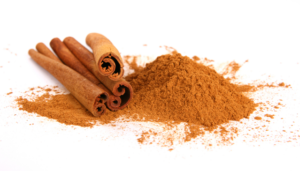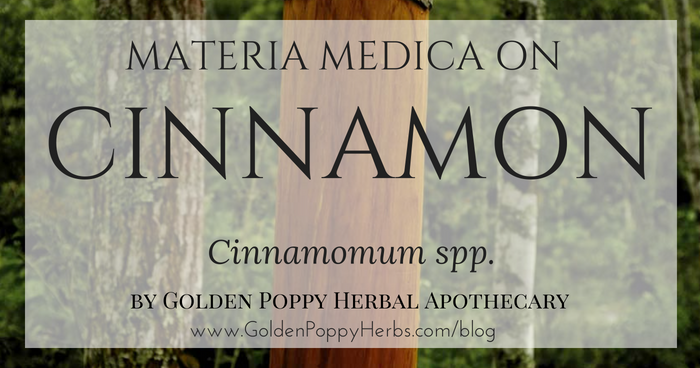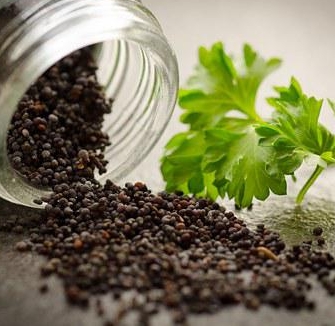DURING THE FIFTEENTH AND SIXTEENTH CENTURIES CINNAMON WAS ONE OF THE MOST SOUGHT AFTER SPICES. ITS SWEET AND SPICY TASTE STILL MAKES IT A POPULAR HERB USED TODAY. CINNAMON IS MOST COMMONLY ADDED TO FOOD TO ENHANCE ITS FLAVOR, HOWEVER IT WAS USED FOR MUCH MORE THAN COOKING IN ANCIENT TIMES.

The use of cinnamon is dated back all the way the ancient Egypt where they would use it in the mummification process, for perfumes, oils, and incense.
There are two different types of cinnamon: Cinnamomum cassia which is of darker color and when bought as the stick looks like one thick piece of bark. Whereas the Cinnamomum zeylanicum/verum, also referred to as sweet cinnamon has a layered look, is lighter in color and as the name describes is sweeter.
Cinnamomum aromaticum is native to China and C. verum is native to Sri Lanka. Both trees are evergreen. The spice is cultivated by peeling off the thick bark of the tree and letting the layers dry. Often times you will see cinnamon in the ground-up form but it is also sold in small pieces which are wonderful to chew on.
However the Cinnamomum verum is the medicinal version, so not all cinnamon you buy at the grocery store is going to have the medicinal properties you may be looking for.
As fall is closing in and winter draws near stop in for some of our delicious cinnamon pieces to add to you apple pie, or let us create a belly-warming tea with cinnamon for you to enjoy during these cold nights!

MATERIA MEDICA: CINNAMON
Latin Name: Cinnamomum verum (syn. C. zeylanicum, sweet cinnamon)
Family: Lauraceae (Laurel Family)
Parts Used: Bark, twig
Key Constituents: Cinnamaldehyde, phenolic compounds, flavonoid derivatives, mucilage, calcium oxalate, resins, sugars, and coumarins (Blumenthal, et al., (Eds.), 2000) salicylic acid, anhyrdocinnzelanine, anhydrocinnzelanol (Duke, 1992), carvacrol (Schnaubelt, 1995).
Actions: Analgesic, anodyne, antibacterial, antibiotic, antifungal, antioxidant, antiviral, aphrodisiac, aromatic, astringent, cardiac stimulant, carminative, circulatory stimulant, decongestant, diaphoretic, digestive, diuretic, emmenagogue, expectorant, hemostatic, mucolytic, stimulant, stomachic, vasodilator, yang tonic.
Energetics: Warm, Dry & Moist , Spicy, Sweet
Preparations and Dosage:
- Topically: Cinnamon can be prepared as a foot bath to help treat athlete’s foot or as a full bath to help treat chills and sore muscles. It can be included in toothpastes to inhibit bacteria and freshen breath. Sprinkled on a cut it can help stop the bleeding!
- Cooking and Baking: Adding cinnamon to muffins, cookies, pies, squash dishes, curry dishes, chai tea, and many more can help enhance the flavor of the food. When added to dairy dishes it can enhance their digestibility!
- Tea: Cinnamon has a very strong flavor, so a little can go a long way!
- Ground: 1/2 tsp. with a squeeze of lemon juice and some honey in hot water is a wonderful tea for cold and flu season.
- Adding cinnamon to your favorite herbal tea blend can be a great way to incorporate its benefits without the sometimes overpowering flavor.
Uses: Appetite loss, arthritis, bedwetting, colds, colic, cough, diarrhea, flatulence, flu, halitosis, headache, hypotension, irregular menses, lumbago, malabsorption, nausea, poor circulation, prostatitis, rheumatism, tuberculosis, and vision problems.
Cautions:
- Cinnamon should not be taken in cases of hot/ feverish conditions, excessive dryness, hemorrhoids, dry stool, or hematuria (blood in the urine).
- Doses of more than 2 grams could cause delirium, hallucinations, and convulsions.
- Avoid therapeutic doses for long periods of time.
Written by apothecary intern Risa Palmer



